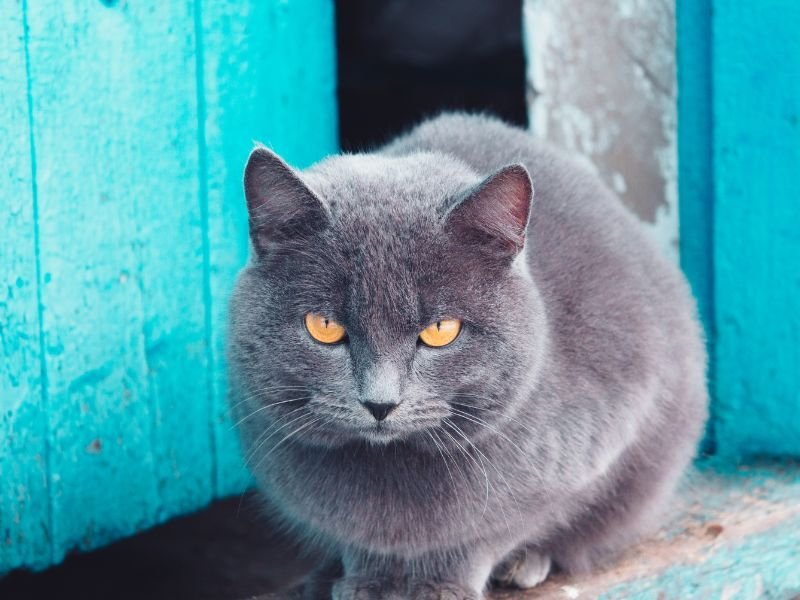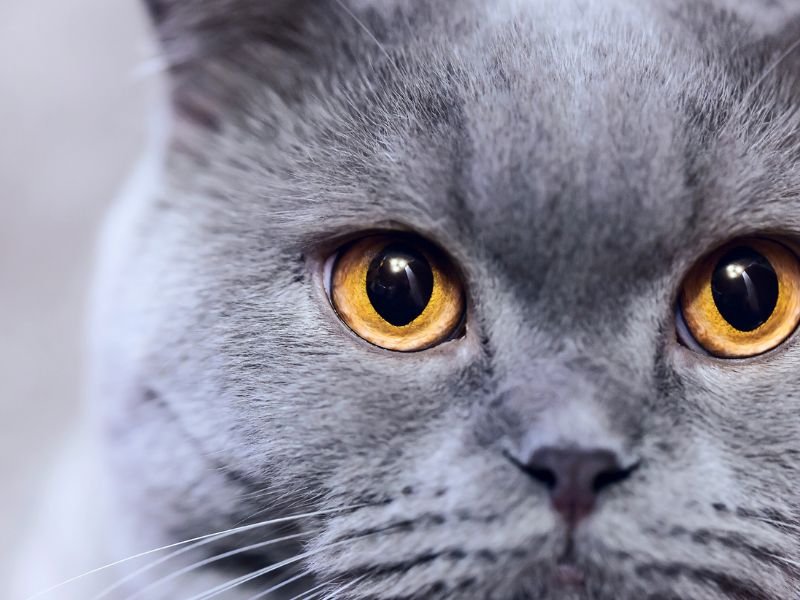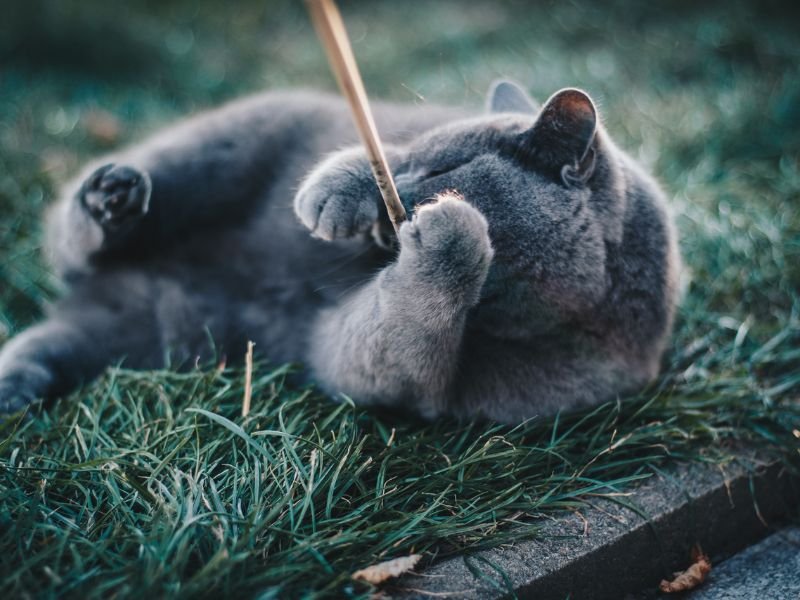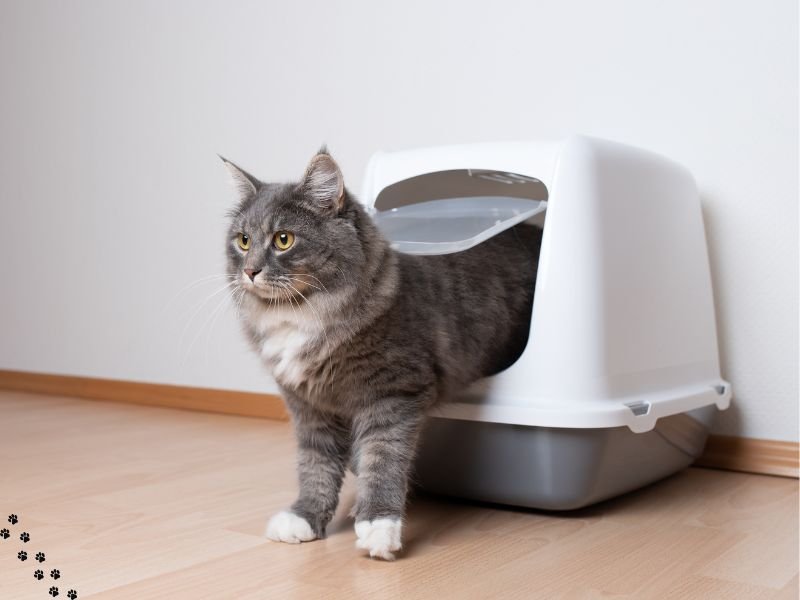Known for their stunning silvery-blue fur and piercing green eyes, Russian Blue cats have captured the hearts of cat lovers worldwide.
However, one question often arises when considering adding these elegant felines to our homes: are Russian Blue cats aggressive?
With their regal appearance and mysterious aura, it’s natural to wonder whether these enigmatic creatures have a hidden aggressive streak.
In this article, we delve into the captivating world of Russian Blue cats to separate fact from fiction and unravel the truth about their temperament, shedding light on the gentle and loving nature of these captivating companions.
Table of Contents
- Understanding the Temperament of Russian Blue Cats: The Truth Behind Their Alleged Aggression
- Are Russian Blue Cats Really More Aggressive Than Other Breeds?
- Unveiling the Factors That May Influence Aggression in Russian Blue Cats
- 4 Tips for Reducing Aggression in Russian Blue Cats
- 5 Training Techniques to Address Aggression in Russian Blue Cats
- Seeking Professional Advice: When to Consult a Veterinarian or Animal Behaviorist for Aggression Issues in Russian Blue Cats
- Healthy Relationships: Maintaining a Bond of Trust and Love with Your Russian Blue Cat Despite Aggression Tendencies
- FAQs About Are Russian Blue Cats Aggressive
- Final Words
Understanding the Temperament of Russian Blue Cats: The Truth Behind Their Alleged Aggression
Despite their striking appearance, which may give off a somewhat aloof impression, Russian Blue cats are generally known for their gentle and reserved nature. Contrary to popular belief, aggression is not a defining characteristic of this breed.
Russian Blue cats are often described as sensitive and intelligent, which contributes to their calm and composed demeanor. While they may be wary of strangers initially, they are known to warm up to their human companions and can form strong bonds with their owners.
It is important to note that any aggression displayed by a Russian Blue cat is likely to be a result of specific factors rather than an inherent characteristic of the breed.
It is crucial to create a well-informed understanding of the temperament of Russian Blue cats to ensure they receive the appropriate care and attention they deserve.
By exploring the factors that may influence aggression in these cats, we can provide insights into their behavior and help cat owners establish a harmonious living environment for their Russian Blue companions.
Are Russian Blue Cats Really More Aggressive Than Other Breeds?
Today, we will explore the popular belief that Russian Blue cats are more aggressive than other breeds and provide an unbiased perspective on their true temperament.
While it is true that Russian Blue cats may exhibit occasional moments of assertiveness or defensive behavior, it is important to dispel the notion that they are inherently aggressive.
Like any other breed, a Russian Blue cat’s temperament is largely shaped by various factors, including genetics, upbringing, and overall environment. While some individual cats may display a more dominant personality, it is unfair to generalize this behavior to the entire breed.
It is important to note that aggression in cats is a complex issue and can be influenced by various factors, including socialization, health, and past experiences.
Russian Blue cats are known for their gentle and friendly nature, and any aggression they exhibit is often a result of fear, anxiety, or stress, rather than innate aggression.
Moreover, it is essential to acknowledge that aggression can be found in any breed of cat, not just Russian Blues.
The stereotype of Russian Blue cats being aggressive may stem from a few isolated incidents or misconceptions.
Therefore, it is crucial to approach this topic with an open mind and avoid making sweeping generalizations about the breed.
By recognizing that aggression in Russian Blue cats is not a breed-specific trait, we can dispel the myth and focus on understanding the underlying causes of aggression in all cats.
Unveiling the Factors That May Influence Aggression in Russian Blue Cats
Understanding the factors that may contribute to aggression in Russian Blue cats is crucial for pet owners looking to provide a safe and harmonious environment for their furry companions.
While each cat’s temperament may vary, it is essential to identify common triggers and stressors that may influence aggression in Russian Blue cats.
By recognizing and addressing these factors, owners can minimize the risk of aggressive behavior and foster a peaceful bond with their feline friends.
Social Environment
Russian Blue cats are known for their aloof and independent nature, but they also thrive on social interaction. Lack of adequate socialization, isolation, or a sudden change in their social environment can lead to stress and aggressive behavior.
It is important to provide these cats with regular opportunities for socialization to prevent aggression stemming from feeling threatened or anxious.
Poor Handling or Rough Play
Rough handling, such as pulling on the tail or excessive force during play, can trigger aggression in any cat breed, including Russian Blue.
These cats have a sensitive disposition and may become defensive or aggressive if they feel uncomfortable or in pain. It is crucial to handle them with care and avoid any actions that may be seen as aggressive or threatening.
Environmental Changes
Russian Blue cats can be sensitive to changes in their surroundings. Relocating to a new home, rearranging furniture, introducing new pets, or even changes in household routines can be stressful for these cats.
This stress can manifest as aggression as they try to establish their territory or adapt to the new environment.
Cats should be given time to acclimate to changes gradually, and their environment should be enriched with familiar objects and scents to alleviate anxiety.
It is important to note that these triggers and stressors may not lead to aggression in all Russian Blue cats, as each individual may respond differently.
However, by understanding these potential factors, pet owners can create a nurturing and stress-free atmosphere that minimizes the likelihood of aggressive behavior in their Russian Blue cats.
4 Tips for Reducing Aggression in Russian Blue Cats
To foster a harmonious environment and promote peaceful coexistence with your Russian Blue cat, several key tips and strategies can help to reduce instances of aggression.
By addressing their needs and minimizing potential stressors, you can create a safe and enjoyable space for your furry companion.
1. Provide Ample Space and Vertical Options
Russian Blue cats are known for their agility and love for climbing and jumping. To prevent feelings of confinement or frustration, ensure that your home offers plenty of vertical spaces, such as cat trees or shelves, for your cat to explore and claim as their own.
Having these elevated perches can help alleviate any pent-up energy and reduce the likelihood of aggressive behavior.
2. Establish a Routine and Predictable Environment
Cats thrive in environments that are structured and predictable. Establishing a consistent routine for feeding, playtime, and rest can help alleviate any anxiety and provide your Russian Blue cat with a sense of stability.
Additionally, consider creating designated areas, such as a comfortable bed or cozy hiding spots, where your cat can retreat to when they desire some privacy or alone time.
3. Provide Environmental Enrichment
Keep your Russian Blue mentally stimulated by providing a variety of toys, scratching posts, and interactive games.
These activities not only help alleviate boredom but also redirect any aggressive tendencies towards appropriate outlets.
Rotate toys to maintain their novelty and provide opportunities for exploration and play.
4. Identify and Eliminate Stressors
It is important to identify potential triggers or stressors that may cause aggression in your Russian Blue cat. These could include loud noises, unfamiliar visitors, or changes in routine.
By minimizing exposure to these stressors, you can create a calmer environment that reduces the likelihood of aggressive behavior.
If unavoidable, be sure to introduce changes gradually and with positive reinforcement, allowing your cat to acclimate at their own pace.
Remember, addressing aggression in Russian Blue cats requires patience, consistency, and understanding. By implementing these strategies and ensuring their overall well-being, you can foster a more peaceful and loving relationship with your furry companion.
However, it is always recommended to consult a veterinarian or animal behaviorist for professional guidance and advice tailored to your cat’s specific needs.
5 Training Techniques to Address Aggression in Russian Blue Cats
It is important to understand that aggression in cats is a complex issue, and it is crucial to approach it with patience and consistency.
You can create a harmonious environment for your Russian Blue cat by promoting positive interactions and implementing proven training methods.
1. Socialization
Socializing your Russian Blue cat from an early age is essential in preventing aggression. Introduce your cat to different people, animals, and environments in a controlled and positive manner.
This process helps them feel more comfortable in new situations and decreases their chances of responding aggressively.
2. Positive Reinforcement
Using positive reinforcement techniques, such as treats, praise, and play, can help modify your Russian Blue cat’s behavior.
Reward desired behaviors, such as calmness or non-aggression, with treats or verbal praise.
This helps them associate positive experiences with appropriate behavior, encouraging them to repeat them in the future.
3. Managing Triggers
Identifying and managing triggers that may elicit aggression in your Russian Blue cat is crucial. These triggers can vary from loud noises to sudden movements, so it’s important to observe your cat’s behavior closely.
Redirect their attention to a more positive activity when they start displaying signs of aggression.
4. Anti-Anxiety Measures
Russian Blue cats can be more prone to anxiety, which may contribute to aggression. Creating a calm and stress-free environment for your cat can be beneficial.
Provide them with a safe space, such as a cozy bed or a high spot where they can retreat when feeling overwhelmed.
Additionally, consider using interactive toys or puzzles that stimulate their minds and help alleviate anxiety.
5. Consistency and Patience
Finally, consistency and patience are key when training your Russian Blue cat. It’s important to set boundaries, reinforce positive behaviors, and consistently implement the training techniques discussed.
Remember that every cat is different, and it may take time to see progress. Be patient and understanding throughout the process.
By utilizing these training techniques and creating a nurturing environment, you can address aggression tendencies in your Russian Blue cat and foster a happier and safer relationship.
However, if your cat’s aggression persists or escalates, it is always advisable to seek professional advice from a veterinarian or animal behaviorist, who can provide specialized guidance and support.
Seeking Professional Advice: When to Consult a Veterinarian or Animal Behaviorist for Aggression Issues in Russian Blue Cats
In some cases, aggression issues in Russian Blue cats may require professional help.
It can be challenging to determine when it’s necessary to seek assistance from a veterinarian or an animal behaviorist, but there are certain signs and situations that indicate the need for expert advice.
If your Russian Blue cat’s aggression is causing harm to you, others, or other pets in your household, it’s essential to reach out for professional guidance.
Any aggression that leads to physical injury or poses a risk to safety should not be taken lightly. A veterinarian or animal behaviorist can assess the situation, identify the underlying cause of aggression, and provide tailored strategies to address the issue.
Additionally, if your Russian Blue cat’s aggression is persistent and does not improve with your efforts in creating a calm and stress-free environment, seeking professional advice is advisable.
Aggression that continues despite your best efforts may indicate deeper behavioral or medical issues that require specialized attention.
During the consultation with a veterinarian or animal behaviorist, be prepared to discuss your Russian Blue cat’s history, including past experiences, socialization, and any recent changes in its environment.
Providing this information can help professionals better understand the root causes of aggression and develop an appropriate treatment plan.
Remember, seeking professional advice is not a reflection of failure or inadequacy as a cat owner.
Instead, it shows your commitment to your Russian Blue cat’s well-being and highlights your willingness to explore all available options to address their aggression issues effectively.
These professionals have the expertise and experience to guide you in managing your Russian Blue cat’s aggression, ensuring a harmonious and safe living environment for both you and your feline companion.
Healthy Relationships: Maintaining a Bond of Trust and Love with Your Russian Blue Cat Despite Aggression Tendencies
In this section, we will explore how to build and maintain a strong relationship with your Russian Blue cat, even if they exhibit aggressive tendencies.
It is important to remember that aggression in cats can be managed and improved with the right approach and understanding.
By implementing a few key strategies and techniques, you can foster a healthy bond of trust and love with your Russian Blue.
Patience and Understanding
Building a relationship with an aggressive Russian Blue cat requires patience and understanding. It is essential to remember that aggression is often a response to fear, stress, or a perceived threat.
By being patient and understanding, you can help your cat feel safe and secure, reducing the likelihood of aggressive behavior.
Positive Reinforcement
Using positive reinforcement techniques, such as treats, toys, and praise, can help reinforce positive behaviors and build trust. Rewarding your Russian Blue cat for calm and non-aggressive behavior can help them associate positive experiences with you and further strengthen your bond.
Environmental Enrichment
Creating a stimulating and enriching environment for your Russian Blue can help reduce their stress levels and decrease aggressive tendencies.
Provide plenty of toys, scratching posts, and climbing areas to engage their natural instincts and redirect any pent-up energy toward appropriate outlets.
Consistent Routine
Establishing a predictable routine can help your Russian Blue cat feel secure and in control. Ensure they have consistent feeding, play, and sleep schedules to minimize any anxiety or stress that may trigger aggression.
Avoid Punishment
Punishment and aggression beget more aggression. It is crucial to avoid any form of physical or emotional punishment when dealing with an aggressive Russian Blue cat. Instead, focus on positive reinforcement and redirecting their behavior towards more desirable actions.
Remember, every Russian Blue cat is unique, and it may take time to establish a harmonious relationship.
By implementing these strategies and seeking professional guidance when necessary, you can foster a bond of trust and love with your Russian Blue cat despite its aggressive tendencies.
FAQs About Are Russian Blue Cats Aggressive
Are Russian Blue Cats aggressive toward humans?
Whereas every cat’s personality is unique, Russian Blue Cats are generally not known to be aggressive toward humans. They are typically affectionate, and friendly, and form close bonds with their owners.
Do Russian Blue Cats have a tendency to bite or scratch?
Russian Blue Cats are not known for their tendency to bite or scratch more than any other domestic cat breed. However, like all cats, they may become aggressive if they feel threatened or provoked.
Are Russian Blue Cats aggressive toward other animals?
Russian Blue Cats generally do well with other animals, including other cats and dogs. As with any cat, individual personalities may vary, but overall they tend to be accepting of other pets when introduced properly.
Are Russian Blue Cats known for their aggressive behavior?
No, Russian Blue Cats are not known for being aggressive. They are typically calm, gentle, and reserved. Aggression is not a common trait or characteristic of this breed.
Are there any specific triggers that can make Russian Blue Cats aggressive?
While Russian Blue Cats are usually not aggressive, certain triggers can potentially cause aggression in any cat breed. These triggers may include feeling threatened, lack of socialization, or pain and discomfort.
Final Words
Russian Blue Cats, in general, are not known to be aggressive towards humans or other animals.
They tend to be affectionate, calm, and well-mannered.
However, it’s important to remember that individual personalities can vary, so always approach any cat, including Russian Blues, with respect and care.













